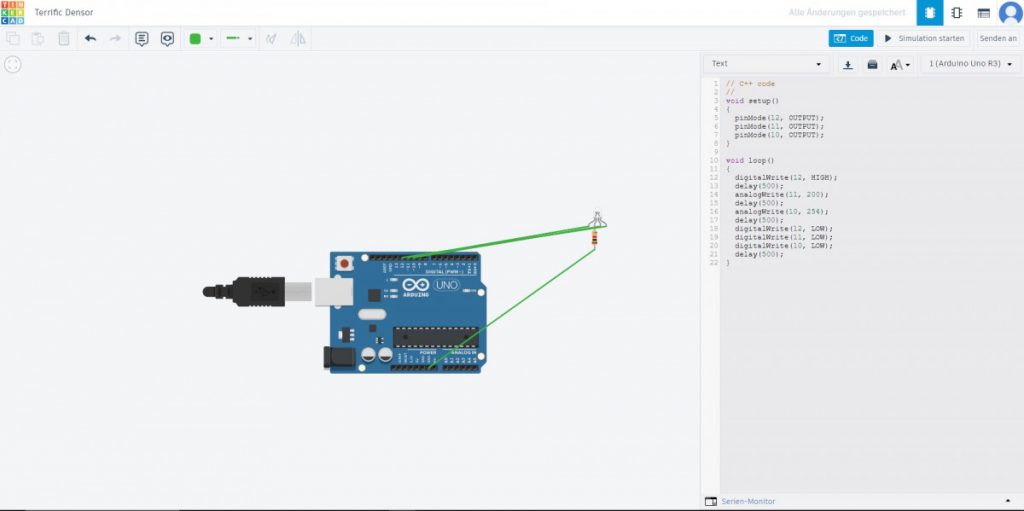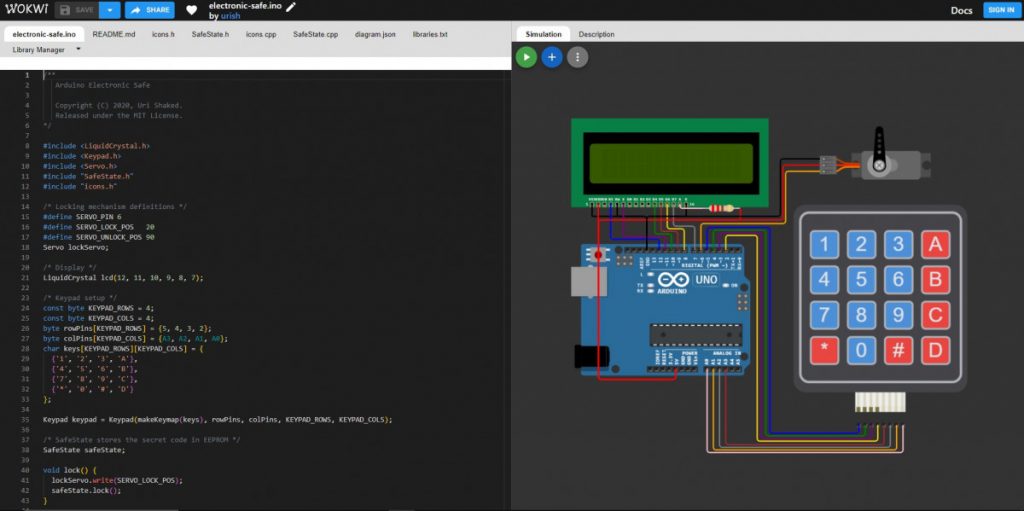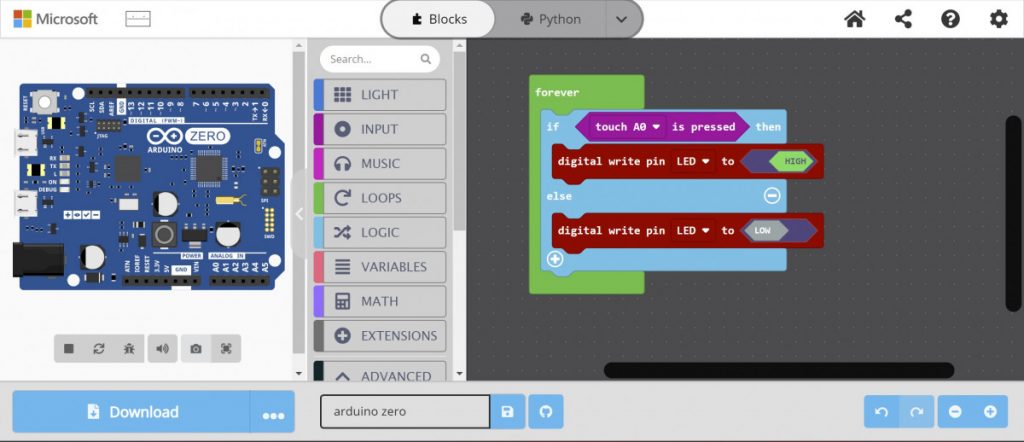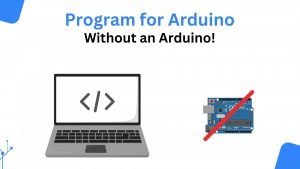Whether you are a beginner and just want to try embedded systems without spending any money, or you are already more experienced and simply don’t have access to a physical Arduino/microcontroller board at the moment, this guide will show you how to program for Arduino virtually and even create whole projects just on your computer.
Keep reading to find out more!
How To Program for Arduino Without a Real Board
Can you program for Arduino without having a real board?
Yes, Absolutely!
There are multiple online simulation platforms that allow you to write code for a virtual Arduino and even connect other electronic components to it. This means that you can build entire circuits virtually in your browser!
After you’ve tested a project and it works on your computer, these platforms also allow you to easily export all of your code and build the project in real life.
Virtual Arduino Platforms
TinkerCAD
Probably the most popular virtual Arduino Environment is TinkerCAD by Autodesk.
TinkerCAD can be used for circuit-, as well as 3D-Design.
Of course, it features the Arduino Uno. You can directly build and program your project inside TinkerCAD.
Later, if you want to make your digital project into reality, you can easily export the code to upload it on a real Arduino Uno.
If you are a complete newbie to embedded systems and programming, TinkerCAD also offers a code block language similar to Scratch.
In general, TinkerCAD is really beginner-friendly while still offering plenty of electronic parts to pick from for more advanced projects. Together with 3D design whole projects can be planned and tested in TinkerCAD.

Advantages
- Free to use
- Very beginner-friendly
- Supports Arduino Uno and micro:bit
- Runs in the browser
- Serial Monitor
- Programming with text or code blocks
- Wide range of components
- Access to all Arduino libraries
Disadvantages
- No schematic view or PCB layout tool
- No debugger / logic analyzer
- Doesn’t support more advanced features like interrupts
- Only two microcontroller boards to choose from
WOKWI
My personal favorite virtual Arduino platform is WOKWI.
It has a large community, is really easy to use, and comes with a ton of already made projects.
Additionally, WOKWI offers one of the biggest electronic component and board selection with the Arduino Uno/Mega/Nano, ESP32, STM32, and Raspberry Pi Pico.

Advantages
- Free to use
- Doesn’t require registration
- Supports Arduino Uno / Mega / Nano, ESP32, Raspberry Pi Pico
- User-friendly interface
- Visual Studio Code style editor with syntax highlighting and autocomplete
- Serial Monitor
- Vast variety of electronic components
- Supports multiple file projects
- Huge library of example projects and projects by other users
- Access to all Arduino libraries
Disadvantages
- No schematic view or PCB layout tool
- No debugger / logic analyzer
Microsoft MakeCode
Microsoft MakeCode is different from the other virtual Arduino platforms in this list. It follows a more beginner-friendly and educational approach with its code block system and Microsoft’s own Python / JavaScript software development kit.
Also, in MakeCode you can’t connect any components to your board. Hence, it is not suited for building entire circuits.
Its purpose is to write and test code on a virtual microcontroller board, before uploading it to a real one.
I still think it’s a good addition to this list, as it is perfect for people who are really just getting started with embedded systems and programming in general and just want to tinker around with only the board.

Advantages
- Very beginner friendly
- Programming with blocks or code
- Many boards to choose from
- GitHub integration
- Serial monitor
Disadvantages
- No other electronic components can be connected to the board (only for programming)
- Microsoft’s own SDK for Python and Javascript: No support for native Arduino libraries
- Limitations and difficulties when writing code for more advanced projects
Limitations of Virtual Arduino Projects
Even though the listed Arduino simulators are pretty capable, they are no full-fledged and scientifically accurate simulation engines.
When working on projects where you have to rely on highly accurate data, simulation with these free platforms wouldn’t work out.
Additionally, bugs can appear that cause some weird behavior or full crashes.
Also, you are limited in what components you can use for your projects. Even fundamental parts like transistors or capacitors can be missing, like in WOKWI, for example.
Obviously, the biggest disadvantage of a virtual Arduino over having a real board is that you can’t test it under real life conditions and don’t get to experience factors like unexpected environmental influences that might cause your project not to work.
Program for Arduino without an Arduino: Conclusion
Programming for Arduino without having a real board is absolutely possible. There are many sites that allow you to simulate an Arduino or other microcontroller Boards, connect components, and program them.
Of course, at some point, you’ll need a real board to realize your project. However, planning and testing can be done on a computer with a simulated circuit.
Also, these simulations can help you gain some first-hand experience with embedded systems if you are a beginner and just want to try it out before spending money on real hardware.
Thanks for reading, consider sharing!

